FLOWER FOR A DAY, JUST ONE
So Sad
The cheery blue color of dayflowers — so named because each flower lasts but a day — does nothing to dispel some pity I feel for them. Not that the petals cry out for my sympathies. You have to get fairly close to the plant, or really stop and look at it, to even see its blossoms.
The reason for my pity demands an even closer look at a dayflower. Zoom into the flower, where you’ll see two prominent azure petals, and then, further below, behind two prominent, anthers that swoop forward, you’ll see a third petal, this one pale in comparison to the other two, and much smaller.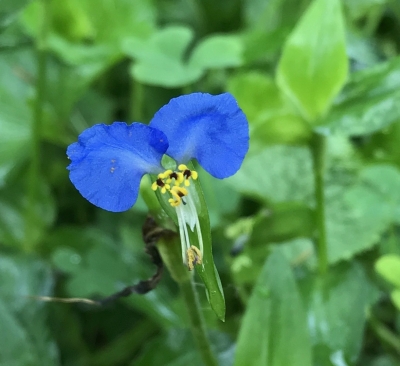
Those petals are what give dayflower its botanical name. Carl von Linnaeus, the founder of our present system of plant nomenclature, gave dayflowers the botanical name Commelina to honor two brothers of an eighteenth century Dutch family who were shining stars in botany at that time.
Why two brothers and three petals? It turns out that there was a third brother also, one who has been described as something of a failure and is represented by the dayflower’s pale, relatively inconspicuous third petal. More generous accounts state that the third brother died young, before he was able to leave his mark on botany. At any rate, what a sad thing to be immortalized for one’s deficiencies.
Kinships
In contrast to the flowers, the plants’ stems and leaves are quite bold, seemingly ready to gobble up any piece of ground they can grab with their succulence and lushness. It’s not only pity that this plant elicits: Aggressive growth coupled with almost inconspicuous flowers, pretty but visible only up close, could categorize any plant as nothing more than a “weed.” And many species of dayflower are considered as such, especially in certain areas of the South and Southwest.
Despite it’s being often called a weed and highlighting someone’s lack of accomplishment, dayflowers come from a good family. Among its kin is the popular houseplant called wandering jew (Tradescantia zebrina, now sometimes referred to with a more politically correct moniker, as “wandering dude”). This native of the American tropics is appreciated up north for the way its drooping, purple tinted stems impart a tropical lushness to our heated homes in winter.
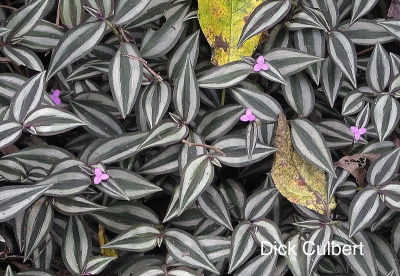
Wandering dude
Another relative is Moses-in-the-cradle (Tradescantia spathacea), this one with lurid purple, spiky leaves. The name comes from the fat flowers that nestle down in the folds of the leaves.
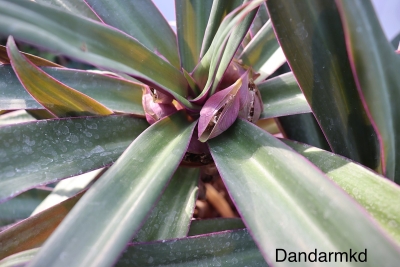
Moses-in-the-cradle
Moses-in-the-cradle is sometimes grown as a houseplant, but my favorite sight of it was outdoors in the tropics growing as a groundcover on a highway divide running from the airport to the city of Santo Domingo. Swathes of purple over large areas of ground contrasted with adjacent beds plush with lime green plants of baby’s-tears (Soleirolia soleirolii). Native to Central America, Moses-in-the-cradle is now considered invasive in some tropical and subtropical regions
Among cold-hardy, outdoor plants, dayflowers’ best known relatives are spiderworts. Spiderworts look much like dayflowers, except that the flowers are larger and have only two petals. 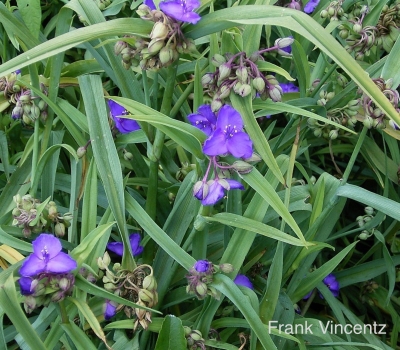 Spiderwort’s leaves are thinner, almost grasslike. The name spiderwort refers perhaps to the resemblance to some people of the blooms to spiders, perhaps to the use of the plant for spider bites (unsubstantiated), or, more probably, to the viscous fluid bled by its cut stem that hardens to become threadlike and silky like a spider’s web.
Spiderwort’s leaves are thinner, almost grasslike. The name spiderwort refers perhaps to the resemblance to some people of the blooms to spiders, perhaps to the use of the plant for spider bites (unsubstantiated), or, more probably, to the viscous fluid bled by its cut stem that hardens to become threadlike and silky like a spider’s web.
Linnaeus named spiderworts for other prominent botanists, the Tradescants. Naturalist and plant collector John Tradescant I, often referred to as the “father of English gardening,” was head gardener to King Charles I. His equally accomplished son, a royal gardener as well, was among the first European plant explorers to the New World. Like dayflowers, spiderworts can spread somewhat aggressively, so much so that they barely make it over to the side of the fence among garden plants rather than the weedy side with the Commelina brothers.
I’m not going to call dayflowers “weeds” in my garden. Their lush greenery is mostly welcome. The plants hitch-hiked into my garden many years ago on some monarda plants from a friend. Thus far, it’s been well behaved, hanging out mostly in one corner of my vegetable garden. Again looking closely at any of the green-hooded flowers reveals besides the three azure petals below which swoop forward two anthers, behind which — and not to be missed — is that third, pale petal.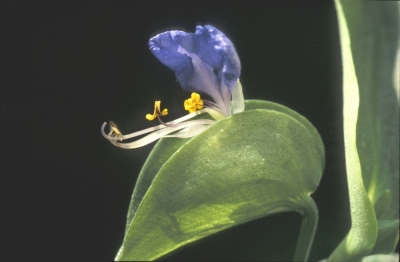


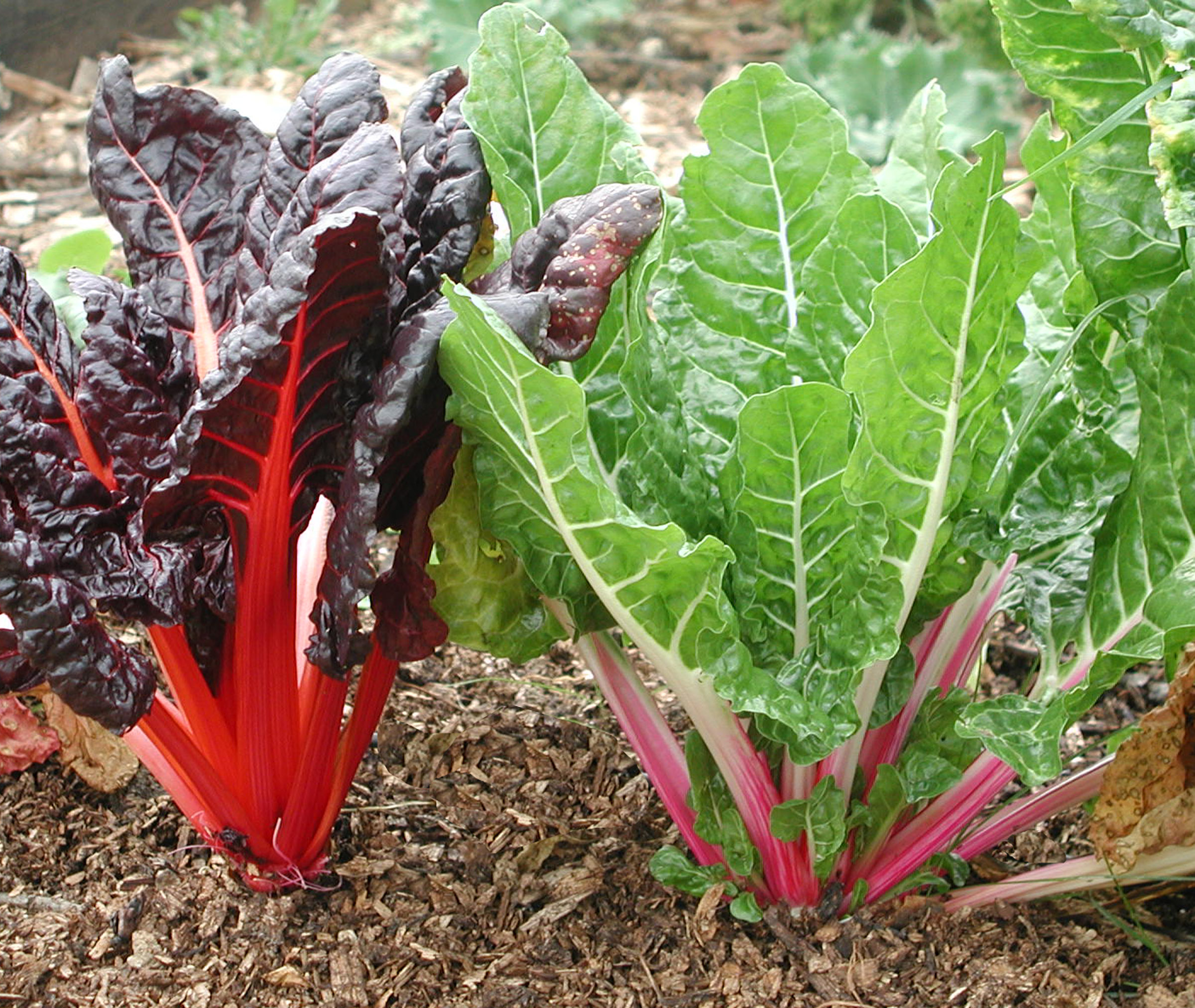
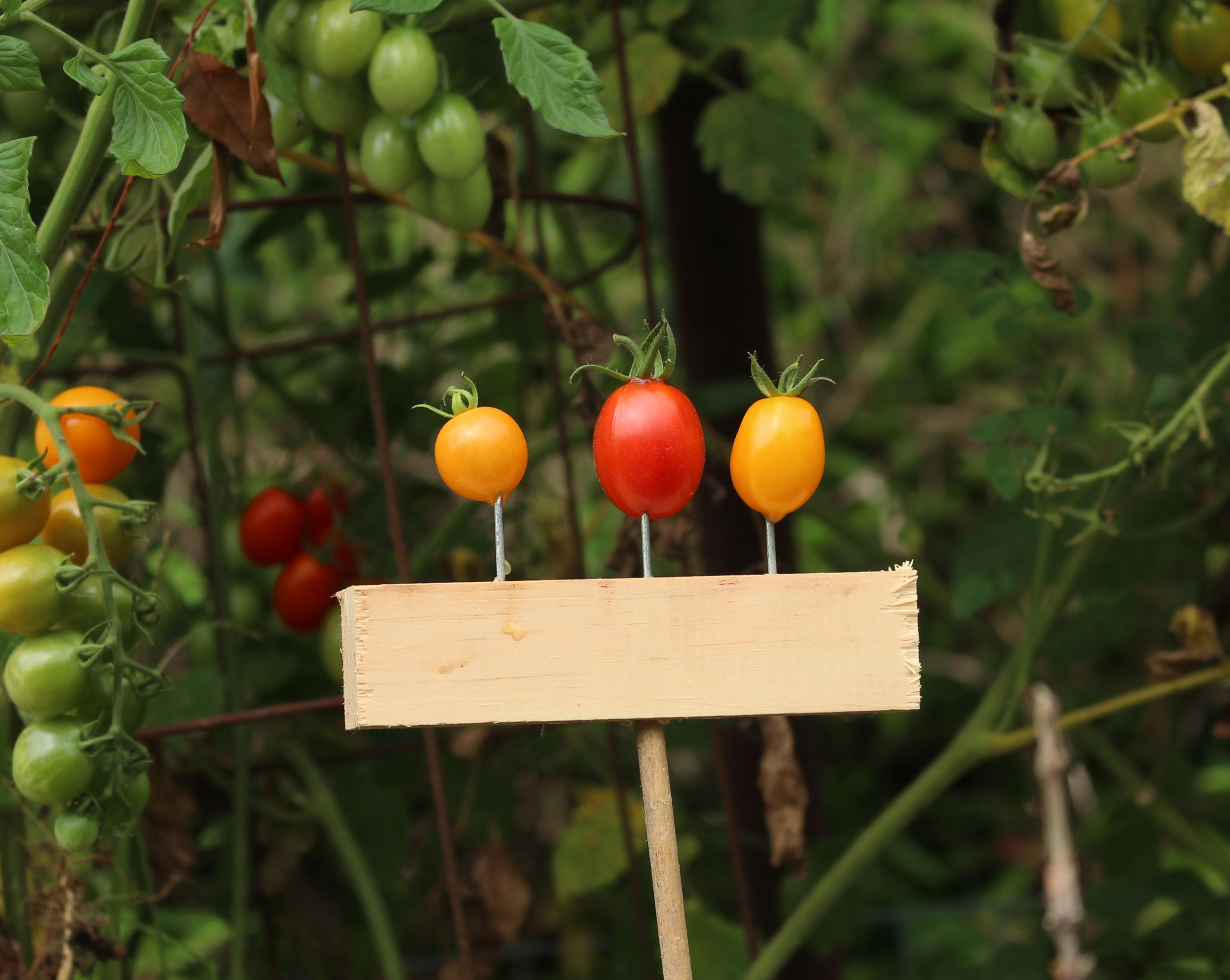
Leave a Reply
Want to join the discussion?Feel free to contribute!